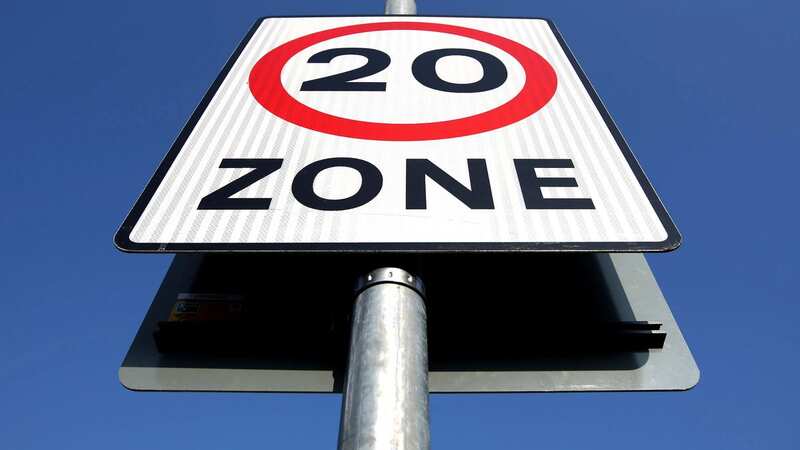Experts warn of common speeding myth after drivers take risks and break limits

Experts have sounded a warning over one common speeding myth after finding drivers were taking risks and breaking limits.
Speed limits are designed to make roads safer for both drivers and pedestrians, but many drivers take risks and go faster than the limit, putting themselves in danger. With the weather now turning wet and windy, speeding is even more dangerous as it's much easier to lose control of a vehicle.
Experts at Claims.co.uk have analysed data from the Department for Transport showing the percentage of vehicles caught speeding in 2021 and 2022. They compiled this information by road and vehicle type to show what road types in the UK have the highest percentages of speeding vehicles.
Some motorists claim to have heard of a 'rule' stating that speeding tickets won’t be applied if the driver is doing 10% + 2mph over the speed limit. This is a misconception as it is not a rule, only a guideline to allow for discrepancies between a vehicle's speedometer and its actual speed. Some speed cameras are calibrated in such a way that, for example, someone going 32mph in a 30mph zone won’t get a ticket, however the law states that it is illegal to exceed the posted speed limit at all.
The data showed that across all vehicle types, the highest percentage of speeding vehicles occurs on 20mph roads. Stats showed that 49% of cars were exceeding the limit by 5mph or more, with 19% exceeding it by 10mph or more. Recently, Wales announced that the default speed limit is now 20mph in most areas that were previously 30mph.
 'UK's most neglected street with post-apocalyptic scenes like The Last of Us'
'UK's most neglected street with post-apocalyptic scenes like The Last of Us'
 Many motorists have heard of a 'rule' stating that speeding tickets won’t be applied if the driver is doing 10% + 2mph over the speed limit (WalesOnline/ Rob Browne)
Many motorists have heard of a 'rule' stating that speeding tickets won’t be applied if the driver is doing 10% + 2mph over the speed limit (WalesOnline/ Rob Browne)These speed zones are located within towns and cities and frequently have pedestrian areas alongside them. In a GOV.UK report compiling factors leading to injury of pedestrians, the majority of all injuries occurred on urban roads, and ‘exceeding speed limit’ was counted as a contributing factor 1,057 times.
The lowest instance of speeding was found on roads subject to the national speed limit. These are single-carriageway roads mainly found in rural areas where vehicles travel 60mph or less. If a car is towing a trailer, the limit reduces to 50mph. Many of these roads include sharp turns and bends, which can be dangerous to tackle at the stated 60mph limit, especially in wet or otherwise adverse weather.
Single carriageways are also used by farm traffic and horses, which cause vehicles to move slower and take more care. The average free-flow speed on these roads is between 47mph and 51mph, with 27% of cars travelling at a speed between 50mph and 54mph.
On motorways, the study found that 21% of cars exceeded the limit by 5mph to 9mph. Despite this, the average free-flow speed was found to be 69mph.
A spokesperson for Claims.co.uk said: "Speeding is a contributing factor in 33% of road accidents and kills over 1,000 people per year. Fatalities are more common at higher speeds which is why governments around the globe are looking at ways to slow vehicles down.
"Instances of speeding have gone down in most cases between 2021 and 2022, with a drop of 1% to 4% across vehicle and road types. Both rigid and articulated HGVs are fitted with speed limiters that come into effect when the vehicle reaches a set limit, usually enforced by the company. This is why they have lower rates of speeding on motorways and single-carriageways.
"The data shows us that speeding is more common in 20mph zones, but overall numbers are high across all road types and zones; 20mph zones have been suggested and put into place due to safety, however, the data shows that driver’s behaviour is worse than in 30mph zones, with speeding occurring 70% more in cars and 64% more in motorcycles.
"Speeding can also cause more damage to a vehicle in a collision, which would increase the cost of repair and cause insurance rates to rise. Using dash cams or speed limiters on private cars and motorcycles could help to decrease the number that exceed the speed limit and encourage safer driving."
Read more similar news:
Comments:
comments powered by Disqus

































